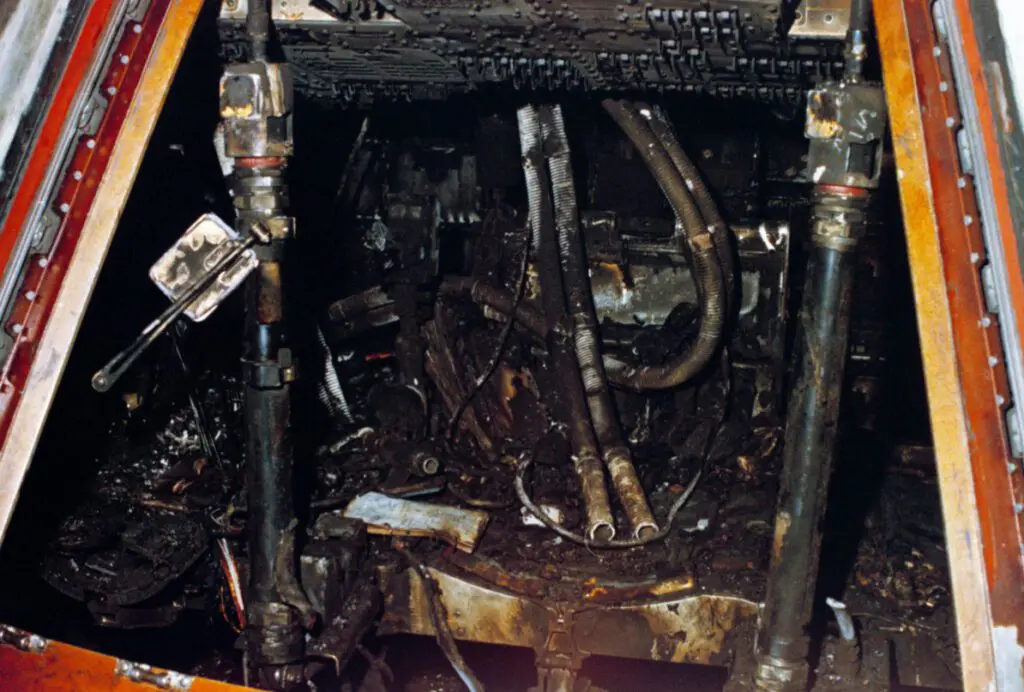The Weekly Reflektion 08/2024
Organisational cultures can change over time, with continued success, or apparent success, people may become complacent. In our Reflektion week 12/2018 we used a quote from Andy Grove founder and former CEO of Intel. ”Success breeds complacency. Complacency breeds failure. Only the paranoid survive”

The Apollo 1 Command Module after the fire
Do you demand nothing short of perfection for how you do your business?
Apollo 1 was planned to be the first crewed mission of the Apollo program, the American undertaking to land the first man on the Moon. The launch was planned on February 21, 1967, but the mission never flew because of a cabin fire during a launch rehearsal test at Cape Kennedy on January 27. The fire killed all three crew members and destroyed the command module (CM).
The launch simulation was what was termed a “plugs-out” test to determine whether the spacecraft would operate on internal power while detached from all cables and umbilicals. The test was considered non-hazardous because neither the launch vehicle nor the spacecraft was loaded with fuel and all pyrotechnic systems (explosive bolts) were disabled. The countdown was at T-10 minutes when a fire broke out in the command module. The intense heat, dense smoke, and ineffective gas masks designed for toxic fumes rather than smoke, hampered the ground crew’s attempts to rescue the men.
The investigation concluded that the ignition source of the fire was electrical. A silver-plated copper wire had become stripped of its Teflon insulation and abraded by repeated opening and closing of a small access door. This weak point in the wiring ran near a junction in an ethylene glycol/water cooling line that had been prone to leaks. The fire spread rapidly due to combustible nylon material in the command module Velcro lining material, and the astronauts’ suits. The high-pressure pure oxygen cabin atmosphere was a major factor in the rapid development of the fire. Rescue was prevented by the hatch, which could not be opened against the internal pressure of the cabin. Since the rocket was unfuelledthe test had not been considered hazardous, and NASA were not prepared for an emergency.
Gene Kranz, NASA’s Chief Flight Director, called a meeting of his staff in Mission Control three days after the accident, delivering a speech which has subsequently become one of NASA’s principles. Speaking of the errors and overall attitude surrounding the Apollo program before the accident, he said: “We were too ‘gung-ho’ about the schedule, and we blocked out the problems we saw each day in our work. Every element of the program was in trouble and so were we.“ He reminded the team of the perils and mercilessness of their endeavour and stated the new requirement that every member of every team in mission control be “tough and competent”, requiring nothing less than perfection throughout NASA’s programs.
After the fire, the Apollo program was grounded for review and redesign. The command module was found to be extremely hazardous and, in some instances, carelessly assembled, for example, a misplaced wrench socket was found in the cabin. The cabin atmosphere at launch was adjusted to 60% oxygen and 40% nitrogen. Nylon used in the space suits was replaced with a non-flammable, highly melt-resistant fabric woven from fiberglass and coated with Teflon. The hatch was completely redesigned to open outwards and could be opened in less than five seconds. Flammable materials in the cabin were replaced with self-extinguishing versions.
Another example of a tragedy forcing the changes that should have been made to prevent that tragedy.
